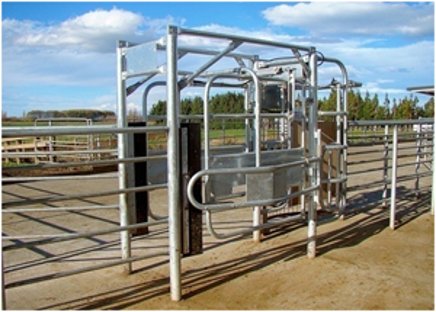Drafting systems
2 min read
This page discusses the importance of automated drafting systems in New Zealand dairy farming. A well-designed automated system can identify and draft cows reliably with minimal disruption. The page offers insights into the proper siting of the drafting system, including considerations like raceway design and cow travel paths. It also highlights potential challenges like poor EID function and the cows' behaviour, and contrasts automated systems with manual drafting techniques. Recommendations are given on sourcing information and visiting other farms to explore different options.
The accurate drafting of cows into groups is an integral part of herd management on farms. It can be a frustrating and time-consuming process if the system is not well designed. Accurate drafting is becoming more important as herd sizes expand.
A good automatic drafting system will identify cows selected for drafting and then draft them as required - accurately, reliably and with as little disruption to cow flow as possible. The drafting system must also provide an easy-to-use interface to select cows for drafting.
Raceway design, cow travel paths and yard locations all require careful consideration if the automated drafting system is to succeed. Consider the following when designing your drafting system:

An automated drafting gate showing the race and sorting gate
Poor EID function can reduce the reliability of the system and may result in cows being missed, depending on system defaults. Operators must have confidence in the system and minimum acceptable standards should be discussed and agreed upon before any purchase is finalised.
The behaviour of the cows as they exit the dairy greatly influences the results achieved by automatic drafting systems. The facilities rely on cows behaving calmly and predictably. Agitated or fearful cows are very difficult to draft, manually or automatically.
Properly functioning drafting systems remove a lot of stress from milkers. The milker should not have to leave the pit to draft animals. Many farmers rig up their own sets of gates and pulleys to facilitate this.
The information given here on automated drafting systems is generic in nature. Keep in mind that specific information about particular commercial products is best sourced from industry suppliers. Also, it is a good idea to visit other farms and seek testimonials from other farmers about different options and products before choosing your own.
Now’s the perfect time to check in, plan, and set up for a strong season. We’ve pulled together smart tips and tools to help you stay ahead all winter long.
Whether you prefer to read, listen, or download handy guides, we’ve got you covered with trusted tools to support your journey every step of the way.